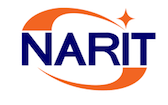Applicants of TNO Cycle 10 can now request multiple instruments in their proposal. The desired instrument(s) can be selected in the instrument section of the online submission form.
Note that the applicants have to provide detailed information on the needs of using multiple instruments for their proposals.
In Cycle 10, the following instruments are available for the TNT:
- ARC 4k camera
Contact: Thawicharat Sarotsakulchai (tavijarus@narit.or.th)
This is the facility imager for all science goals not requiring time resolution shorter than ~10s (where ULTRASPEC is a more suitable instrument). The camera has been designed and realized by ARC (Astronomical Research Cameras, Inc.), and is based on an E2V232-84 thinned, astronomy broadband AR coated, Grade One CCD with 4096 x 4096 x 15.0 micron pixels, RON is around 4e-. The camera is equipped with UBVRI, Hα, red continuum, and [SII] filters. The camera was installed in Cycle 2 and was fitted with a focal reducer at the end of Cycle 6. The instrument Field of View (FoV) is consequently enlarged to approximately 14'.6. It is being offered on a shared risk basis and under commissioning terms for up to TWO cycles, starting from Cycle 7. Please note that any publication resulting from data taken with the instrument during the commissioning phase MUST include the focal reducer development team members (PI. Christoph Buisset) as the co-authors beside the normal TNT acknowledgment rules.
- ULTRASPEC
Contact: Puji Irawati (puji.irawati@narit.or.th)
A PI instrument delivered under a Memorandum of Understanding among NARIT, the University of Sheffield, and the University of Warwick (PI V. Dhillon). Born out of the experience with the successful ULTRACAM fast 3-band camera and using similar acquisition electronics, ULTRASPEC is based on a state-of-the-art low-light level (L3) Electron Multiplying CCD by e2V with 1k x 1k x 13µm pixels with virtually zero RON. One key feature is the so-called frame-transfer, which enables fast data readout (100ms full-frame, and up to 10ms on subarrays). The instrument is equipped with a large set of broad-band (mostly based on the SDSS system) and narrow-band filters. ULTRASPEC is ideally suited to measure fast varying phenomena such as flares, outbursts, transits, etc. It has been widely used already in Cycles 1, 2, and 3. The ULTRASPEC consortium has a right to Guaranteed Time Observations, but open time is available for other requesters. A detailed description with relevant links can be found in Dhillon et al. MNRAS, 444, 4009 (2014). Further details can be found on the ULTRASPEC Sheffield website. Any publication resulting from observations made with ULTRASPEC must follow the publication rules.
What's new: There have been reports of CCD reading problems. If you encounter this problem, please notify the night assistants.
HiPERCAM pipeline has been installed on the drpc machine. Observers using ULTRASPEC are expected to use this new pipeline and perform their real-time reduction process on /home/observer/reduce/yyyy_mm_dd on the drpc.
See the following links for more details:
Remote observation: http://www.vikdhillon.staff.shef.ac.uk/ultraspec/userman/remote_observing.html#Chiang%20Mai
HiPERCAM pipeline: http://deneb.astro.warwick.ac.uk/phsaap/hipercam/docs/html/
- MRES
Contact: David Mkrtichian (davidmkrt@gmail.com)
The Medium Resolution Spectrograph (MRES) is manufactured by the Nanjing Institute of Astronomical Optics and Technology (NIAOT), China. The MRES is based on a white pupil optics design with R2.6, 52.67 g/mm, blazed at 69-degree echelle. It is a fiber-fed echelle spectrograph designed to work in the spectral range of ~3900-8800 Å, with a spectral resolution of R ~16,000-19,000. This instrument is equipped with a 2048x512 pixels Andor CCD camera with a pixel size of 13.5 µm. The MRES observations can be controlled with any of the two softwares, Andor Solis (s) or Maxim DL. There is no user manual available at the moment, however, users are suggested to contact the instrument scientist (David Mkrtichian) in case of any queries/questions.
A data reduction pipeline for MRES can be available at the following link: https://github.com/ich-heisse-eugene/PyYAP
An exposure time calculator is also available here: https://github.com/ich-heisse-eugene/mres-exposure
- LRS
Contact: Chutipong Suwannajak (chutipong@narit.or.th)
The Low-Resolution Spectrograph (LRS) will not be available in Cycle 10 due to technical upgrades. However, NARIT PIs may submit their targets for science verification during February - April 2023.
Useful links:

